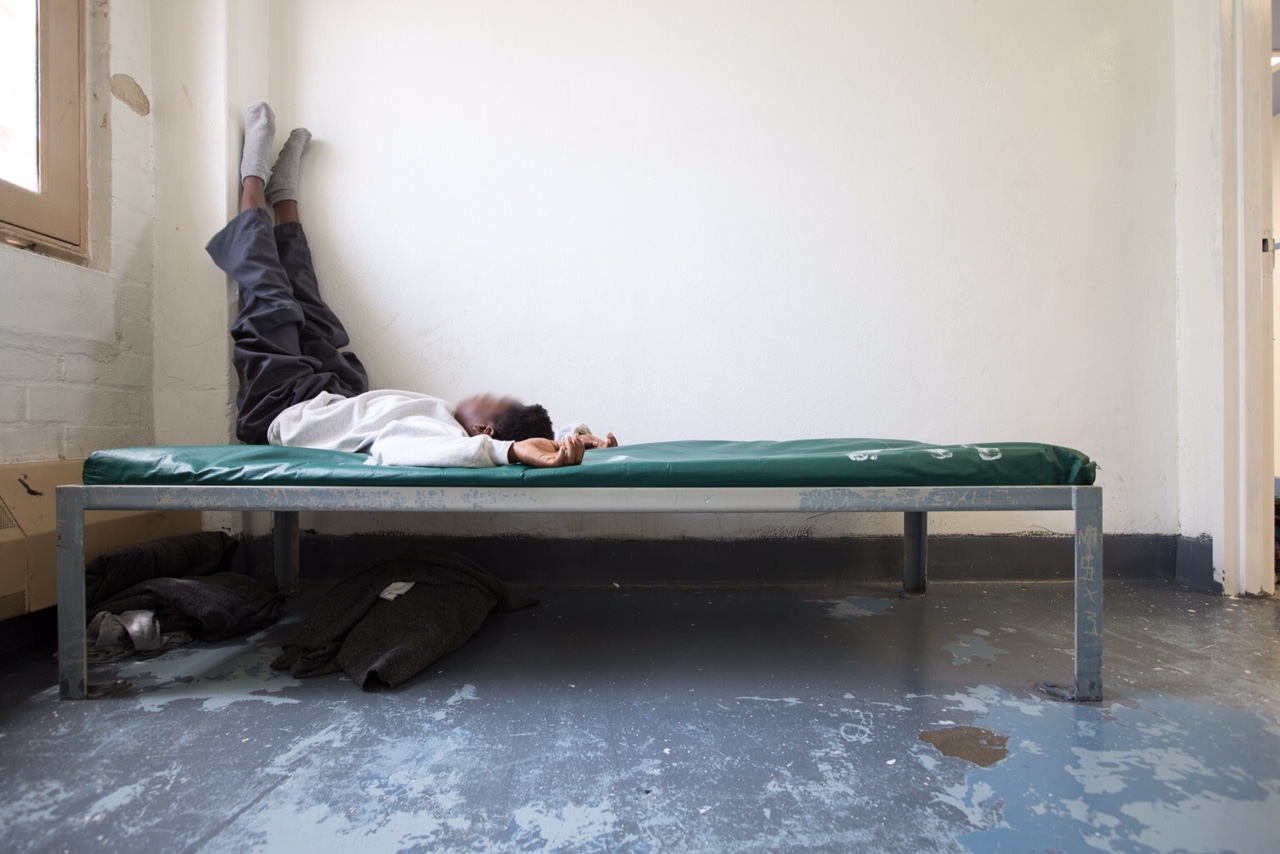The number of children incarcerated in juvenile prisons across the United States fell to an all-time low in 2020, the latest year of available federal data about those facilities, fueling proponents’ hopes of entirely eliminating those detention centers.
The decline in incarcerations came as juvenile arrests have also dropped for most crimes except murder, which has been on the rise in recent years.
Against that backdrop, an increasing number of states have closed juvenile prisons, diverting that funding to alternative placements in the community, such as group homes or home confinement, and programs that provide rehabilitative and wraparound social services.
“It’s not just a jail break,” said Vincent Schiraldi, a former commissioner of New York City’s probation and correction departments who supports these alternatives.
Supervising kids in the community or placing them in home-like settings near their families are preferable to a state-run prison, said Schiraldi, author of “Can We Eliminate the Youth Prison? (And What Should We Replace It With).”
But those who want to close prisons for juveniles and invest in community-based rehabilitation for that population said the transition won’t be easy. At least in the short run, Schiraldi said, it can be more expensive. And in some states, alternatives have been slow to emerge or closely resemble the facilities they are intended to replace.
Violence, isolation documented in youth prisons
The number of incarcerated youth declined 77% from more than 108,000 in 2000 to about 25,000 in 2020, according to the data from the U.S. Office of Juvenile Justice and Delinquency Prevention.
Fueling the downward trend of juvenile incarceration rates — in addition to lower crime and arrest rates — several studies have linked being incarcerated as a youth with poorer physical and mental outcomes later in life, including increased risk of substance abuse and incarceration as an adult. Further, even as arrest rates plummet, children of color continue to be disproportionately locked in these facilities.
“These systems cause an enormous amount of damage,” Schiraldi said. Youth prisons limit children’s educational opportunities and many experience violence, sexual assault and mental and physical trauma, he said.
A string of scandals over the decades has highlighted what advocates characterize as systemic abuse in the country’s youth prisons.
In 2000, Louisiana agreed to close its private youth prisons and submitted to federal oversight of the state-run institutions in order to settle several lawsuits alleging widespread abuse and lack of basic care for incarcerated children.
But just last month, the governor of Louisiana called for an investigation into one of the state’s largest facilities following a New York Times expose documenting a string of suicides and suicide attempts among children there, as well as the state’s history of lenient plea deals for staff accused of sexual abuse.
That report came on the heels of a separate investigation by ProPublica that children at a different Louisiana detention center were subjected to round-the-clock solitary confinement and denied access to education.
Louisiana is not the only state to come under scrutiny. Last year, the U.S. Justice Department announced an investigation into juvenile detention centers in Texas based on reports of physical and sexual abuse of children by staff.
In 2020, California Gov. Gavin Newsom signed a law to close all the state’s youth prisons by 2023 after years of intense criticism following media reports, state investigations and lawsuits that documented how juvenile detainees were subjected to intense violence and isolation.
The state’s juvenile prison system was so terrifying to George Galvis, who was nearly sentenced there as a teenager, that it led him to start the nonprofit Communities United for Restorative Justice with the mission to end youth incarceration altogether.
“There were young people who were taking their own lives because the conditions of confinement there were just so horrific,” said Galvis. “I lost some friends in that system.”
Under the 2020 law, juvenile offenders are supposed to be housed in county youth treatment facilities. However, the Los Angeles Times and others have reported that severe staffing shortages have made these county facilities unsafe for youth and workers, and that they suffer from many of the same problems as the old prisons.
The high costs of incarcerating the few
Between 2002 and 2012, one in three youth correctional facilities shut down. More recently, at least five major youth prisons have closed since the pandemic, according to Miriam Krinsky, a former prosecutor and executive director of Fair and Just Prosecution, with more slated to shut down in the years ahead.
In addition to California’s commitment to closing its state-run youth prisons by 2023, Maine passed a bill to close its only youth prison and Illinois announced a plan to close its five youth prisons over four years.
But advocates of abolishing youth prisons still have a long road ahead, said Krinsky.
“As long as we keep these facilities open even for a small number of kids, we’re continuing to spend money on the institutional structure and on staffing which can better be invested in other things,” said Krinsky.
The decline in numbers has left some secure facilities with very small numbers of incarcerated kids but with very large overhead costs.
“What’s happening is you have empty or largely empty facilities, fully staffed, so even with the declining numbers, the cost per kid has gone through the roof,” said Schiraldi.
In New York, the state pays the highest price in the country to house a single kid in state youth prison at as much as $892,206 a year. The average of incarcerating a kid in a secure facility was $214,620 per year, an increase of 44% since 2014, according to the Justice Policy Institute’s report, Sticker Shock 2020: The Cost of Youth Incarceration.
The Hawaii case
On June 16, 2022, the Hawaii Commission on the Status of Women published a tweet touting that for the first time on record, not a single girl was incarcerated at the state’s only youth prison. The girls’ section did not stay empty for very long, but it still represented a steep drop from just a few years ago — in 2010, more than 30 girls at a time were housed at the facility.
The number of boys has also dropped over that same period from about 100 to less than 20.
“The incarcerated population is not the only thing that’s dropping,” said Mark Patterson, administrator of Hawaii Youth Correctional Facility. “Probation is down, convictions are down, petitions are down, arrests are down. It’s not an anomaly.”
With just one girl and 17 boys incarcerated at the 500-acre Hawaii Youth Correctional Facility in September, Patterson said he has an annual budget of $11 million and 75 employees.
Even with the decline in the number of incarcerated youth, Patterson said he is limited in his ability to reduce staff.
“Hawaii is a very strong union state and you don’t just let them go,” Patterson added.
Patterson said he’s opened up the facility campus to community-based youth services organizations and uses some of the money in his budget to support them.
Patterson was hired to reform the youth facility, and he doesn’t think it should be eliminated entirely. Rather, he’d like to take the corrections and punitive methods out of the equation and turn the campus into a therapeutic and wellness space for kids who don’t have anywhere else to go.
“I’m not saying there will be no consequences, but the consequences should be something that will make a better product for the overall community,” Patterson said. “Do we really need them to be secure? That’s the big question.”
Biden hires longtime juvenile justice reformer
Last May, President Joe Biden appointed Liz Ryan as administrator of the Office of Juvenile Justice and Delinquency Prevention.
Previously president and CEO of the Youth First Initiative, Ryan led efforts that dismantled youth prisons in six states and diverted millions of dollars into community-based alternatives.
As administrator, Ryan has said “detention does more harm than good” and will further federal efforts to promote incarceration alternatives, create school and work opportunities for justice-involved young people and address racial inequality within the juvenile justice system.
One of her first duties in office was to open grant applications for states to close youth correctional facilities.
Advocates hope the federal government will play an increasingly important role in shifting juvenile justice away from incarceration.
“I’m incredibly hopeful that Liz Ryan as the voice of OJJDP will help propel this shift forward in ways that we haven’t seen the federal government get behind in past decades,” Krinsky said.
***
Brian Rinker is a San Francisco-based freelance writer and journalist. He covers public health, child welfare, digital health, startups and venture capital. His work has been published by Kaiser Health News, Health Affairs, The Atlantic, Men’s Health and San Francisco Business Times. Brian received master’s degrees in journalism and public health from UC Berkeley.
































